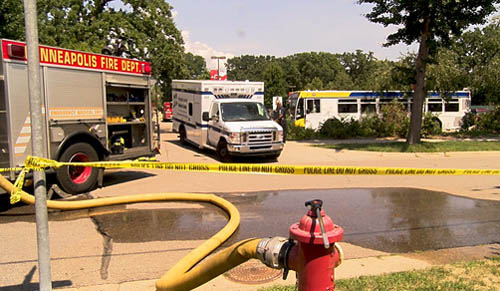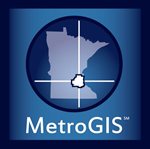An address point is a specific data pinpoint assigned to each unique address. This includes not only houses, apartments and businesses, but now also water towers, power substations, transit platforms and bridges.
Address points are critical for emergency responders, law enforcement, health and human service agencies, planning and zoning officials, census counters, delivery services and much more.
A new regional dataset provides pinpoint accuracy to nearly 1.2 million unique addresses within the seven-county metro area. It will benefit a wide range of public services from emergency response to municipal planning.
The dataset contains unique location points assigned not only to houses, apartments and businesses, but also to such fixtures as water towers, power substations, transit platforms, bridges, parks and even vacant land between the built environment.
MetroGIS, a regional collaborative hosted and supported by the Metropolitan Council, worked in partnership with the state, cities and counties as well as 9-1-1 and emergency response services to develop the dataset.
Standardized data can literally save lives
The ability to easily and readily access standardized data from hundreds of different jurisdictions across the metro will not only save time, effort and taxpayer money, it literally will save lives when it is used by emergency responders, said MetroGIS Coordinator Geoff Maas.
Marcia Broman, 9-1-1 Coordinator for the Metropolitan Emergency Services Board, said the dataset represents a huge step forward in the region.
 “This tool is a major accomplishment that will have significant benefits for 9-1-1 responders when every second counts, in addition to many other public benefits for our region,” Broman said. “Minnesota once again demonstrates its leadership in inter-governmental cooperation for the benefit of its citizens to produce and maintain these kinds of data resources.”
“This tool is a major accomplishment that will have significant benefits for 9-1-1 responders when every second counts, in addition to many other public benefits for our region,” Broman said. “Minnesota once again demonstrates its leadership in inter-governmental cooperation for the benefit of its citizens to produce and maintain these kinds of data resources.”
The dataset is free and available to the public via the Minnesota Geospatial Commons. It will especially be useful for urban planners, cartographers, researchers, academics, developers and journalists who need data for a project or have other specific GIS-based uses.
Planners rely on accurate geospatial data
Metropolitan Council GIS Specialist Paul Hanson said the project has significant potential for municipal planners across the region whose daily work relies on accurate GIS data.
“The Address Point Dataset has vastly improved our ability to accurately locate businesses, housing complexes, and new construction,” he said. “Previously we were limited in locating such features to a parcel address or an address range along a street network. Frequently the addresses didn’t match, or the address range was inaccurate.
“Having this new address dataset helps us more accurately locate features in the seven-county region, particularly within a larger property such as a shopping center or business park,” Hanson said.
Partnerships over many years were critical
 The new dataset resulted from many years of interagency work by MetroGIS partners, including the Metropolitan Council, city and county government, and some private entities.
The new dataset resulted from many years of interagency work by MetroGIS partners, including the Metropolitan Council, city and county government, and some private entities.
Discussions first began in 2004 about the need for address standards to meet both municipal and 9-1-1 needs. It took a small group of planners several years to establish a process for merging then-existing but disparate systems in use by hundreds of jurisdictions across the region.
In Minnesota, city governments are the authoritative source for assigning addresses to sites within their municipal boundaries, while counties are largely responsible for assigning addresses outside of incorporated municipalities. Each city and county maintains the sovereignty and authority to enact their own methodology for assigning addresses within their jurisdiction.
"That situation made it a challenge to having standardized data regionwide," said Maas.
Eventually, new standards emerged in 2016 and were refined again in 2017 during several rounds of a statewide stakeholder review process.
The Minnesota Geospatial Advisory Council formally adopted the new standards in December 2017.
This year, county GIS departments across the region merged their newest data into the master dataset, and the Metropolitan Council published the data as a regional resource available to the public at no cost.
Maintaining the regional investment
Keeping the dataset current and expanding it is a key goal of the project moving forward. The system is automated so regional partners can load their newest data into a centralized location every day and the entire dataset can be updated every night.
“Maintenance of the dataset, the processes that keep it updated and the relationships among the agencies that produce it are of prime importance to our collaborative work,” Maas said. “Further, keeping the agreements and effort in place are at the foundation of our long-term work plan at MetroGIS.”
Maas said the project illustrates the importance of working together to maximize the value of the data and the investment that each government has made in the technology.
Regional partners hope the new dataset will be picked up by Google Maps, Open Street Map, and ESRI’s Community Base Map so they all use authoritative standardized data from the source, and not their own derivative versions that may differ.
For more information